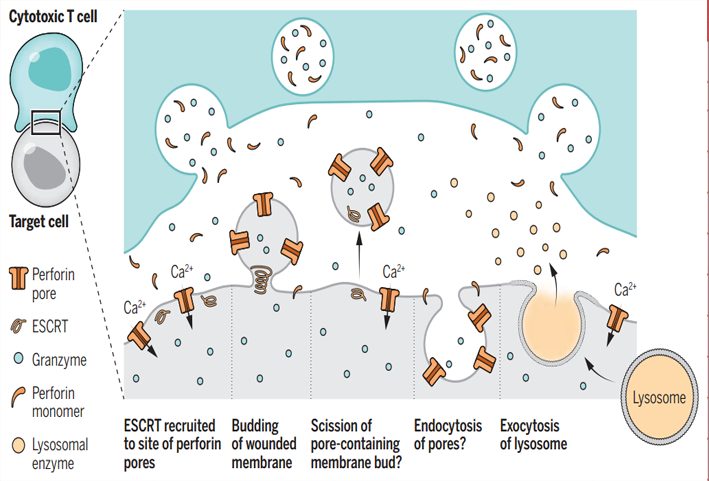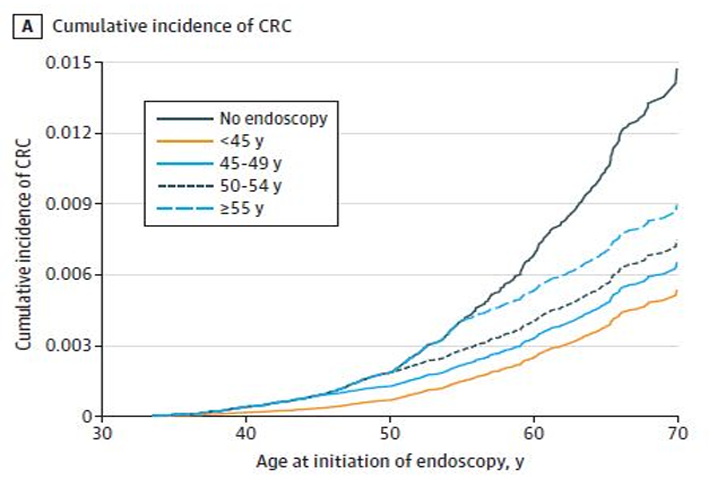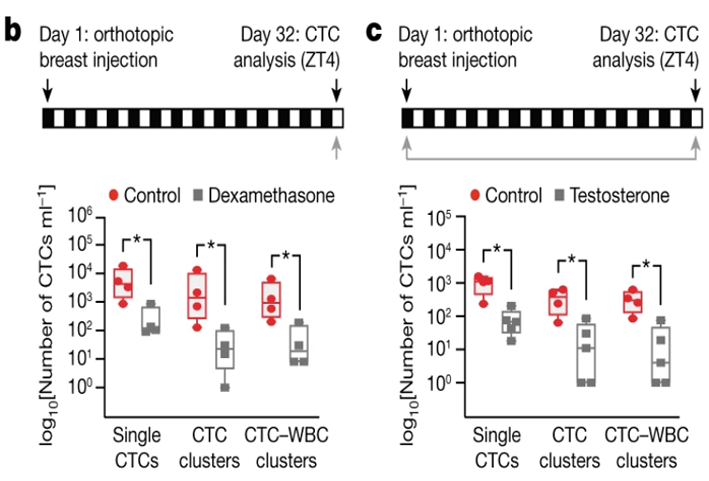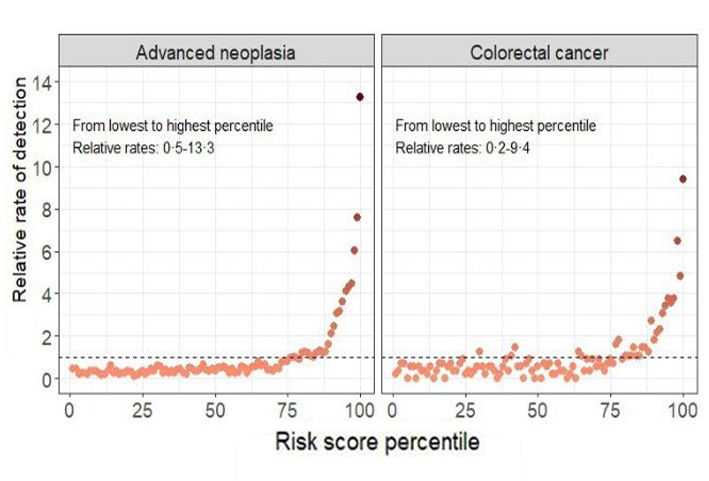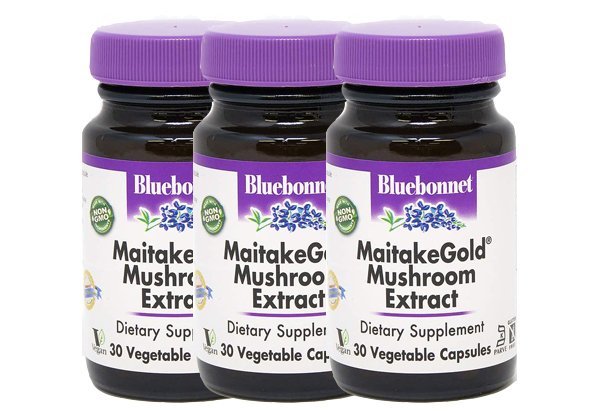One of the most common side effects of tumor chemotherapy is bone marrow suppression, and patients may have a decline in leukocytes, platelets, and red blood cells. Among them, leucopenia is the most common. Dealing with leucopenia is a common problem in chemotherapy.
According to the degree of leukocyte reduction, it can be divided into four levels:
Grade I: lower limit of leukocyte normal value ~3.0 × 109/l or lower limit of neutrophil normal value ~1.5 × 109/L;
Grade II: leukocyte 2.0~3.0 × 109/l or neutrophils 1.0~1.5 × 109/L;
Grade III: leukocyte 1.0~2.0 × 109/l or neutrophils 0.5~1.0 × 109/L;
Grade IV: leukocyte lower than 1.0 × 109/l or neutrophils less than 0.5 × 109/L;
Leukopenia enhancing drugs are the main means to treat leukopenia, and their mechanism of action is mainly reflected in two aspects:
Promote the release of mature granulocytes in bone marrow blood pool;
Stimulate the proliferation, differentiation, maturation and release of bone marrow granulocyte hematopoietic progenitor cells into peripheral blood.
After the use of Shengbai needle, the peak value of peripheral blood leukocytes will appear in 2-3 days, which is due to the release of mature leukocytes in the bone marrow blood pool. After 8-9 days, there was a second peak, which was caused by the stimulation of new leucopoiesis by leukogenic drugs. Therefore, after the use of Shengbai needle, the white blood cells in peripheral blood will show bimodal fluctuations.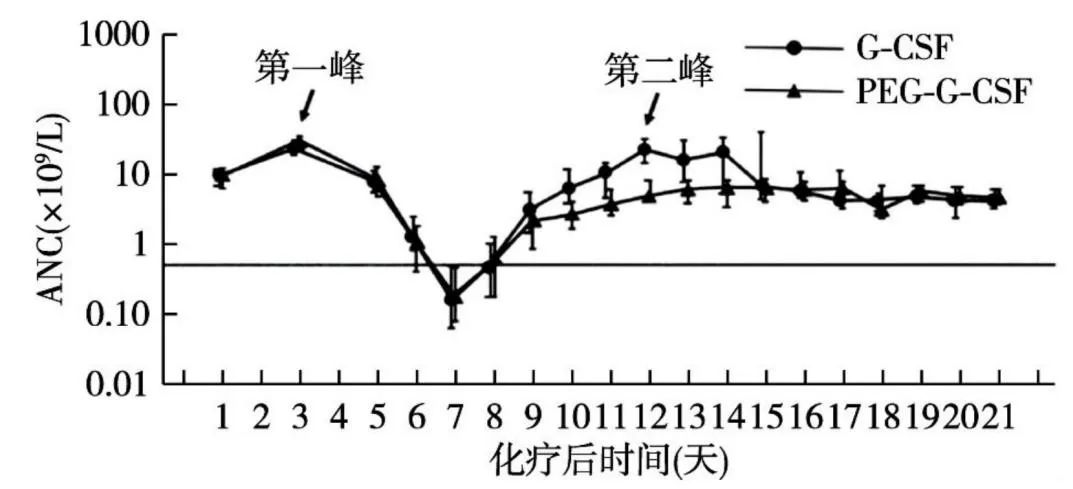
Journal of clinical oncology 1009-0460 (2021) 07-0638-11
According to the use purpose of whitening needle, it can be generally divided into therapeutic whitening and preventive whitening. As the name suggests, therapeutic leukopenia is to treat leukopenia after leukopenia, and preventive leukopenia is to give leukopenia drugs before leukopenia.
1、 Therapeutic whitening
NCCN guidelines only recommend whitening treatment for patients with febrile neutropenia (FN).
FN patients who have used prophylactic whitening are not recommended to use short acting whitening needles. If FN patients without prophylactic whitening are at risk of CO infection, whitening treatment is recommended.
It is generally not recommended to inject white needles on the day after chemotherapy, and it is not suitable to inject chemotherapy on the day after injection. The interval between the two is better than 24 hours. This can avoid the damage of new neutrophils by chemotherapy drugs and increase the risk of bone marrow suppression to the greatest extent.
2、 Preventive whitening
The use of prophylactic whitening depends on the risk of chemotherapy drugs.
1. High risk chemotherapy regimen: it is recommended to give whitening treatment at the beginning of the course of treatment, such as the three drug regimen for gastric cancer chemotherapy: Docetaxel + cisplatin + fluorouracil.
2. Medium risk chemotherapy regimens: such as mfolfox6 regimen, irinotecan / cisplatin, epirubicin + cisplatin + 5-fluorouracil / capecitabine, etc., whether to prevent whitening should be considered according to the situation of patients. If the patient has any one or more of the following factors, preventive whitening treatment is recommended:
Previously received radiotherapy / chemotherapy;
Persistent neutropenia;
The tumor involved bone marrow;
Recent surgery or open wound;
Abnormal liver and kidney function;
Patients over 65 years old received full dose chemotherapy;
FN occurred in the past;
Malignant hematolymphatic diseases;
Chronic immunosuppression such as HIV;
Poor nutrition / physical condition.
3. Low risk chemotherapy regimen: generally, preventive whitening is not required. However, it should be noted that blood routine should be re evaluated after each chemotherapy course to decide whether whitening treatment is needed.
In preventive treatment, the comparison between long-acting Shengbai needle (pegylated recombinant human granulocyte stimulating factor, PEG rhG CSF) and short-acting Shengbai needle (recombinant human granulocyte stimulating factor, rhG CSF):
3、 Treatment of adverse reactions related to whitening therapy
1. Mild to moderate bone pain is the main adverse reaction. Acetaminophen and non steroidal anti-inflammatory drugs are the first-line drugs to prevent and treat adult acupuncture related bone pain. In addition, antihistamines and opioid analgesics can also be selected.
2. Neutrophils increase temporarily, and a few patients have the phenomenon of immature granulocytes, and some patients have the aggregation of immature granulocytes. Leukemoid reaction caused by Shengbai needle often disappears after drug withdrawal, and generally does not need special treatment.
3. Patients who need prophylactic whitening, if neutrophils > 30 before chemotherapy × 109/l or leukocyte count > 50 × 109 / L, it is recommended to reduce peg rhG CSF to 3mg and rhG CSF to 2.5 during prevention in this cycle μ g/kg/d。
Attached table: specific scheme for the risk level of FN in various tumors.
1. Breast cancer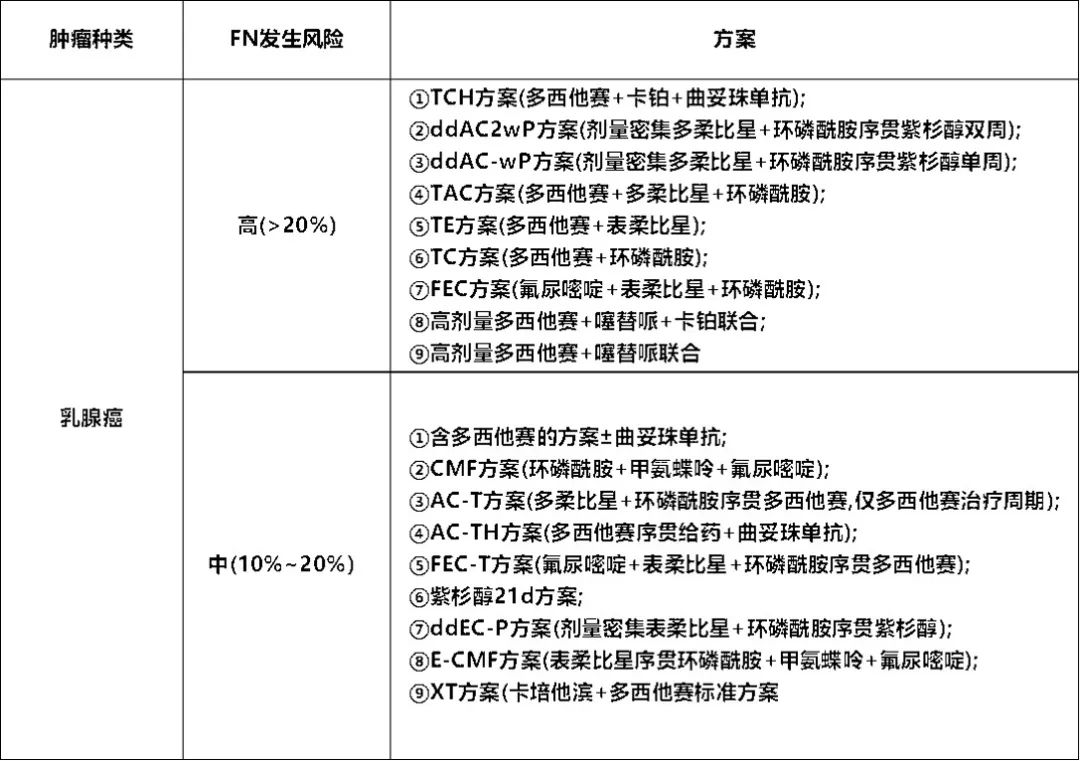
2. Lung cancer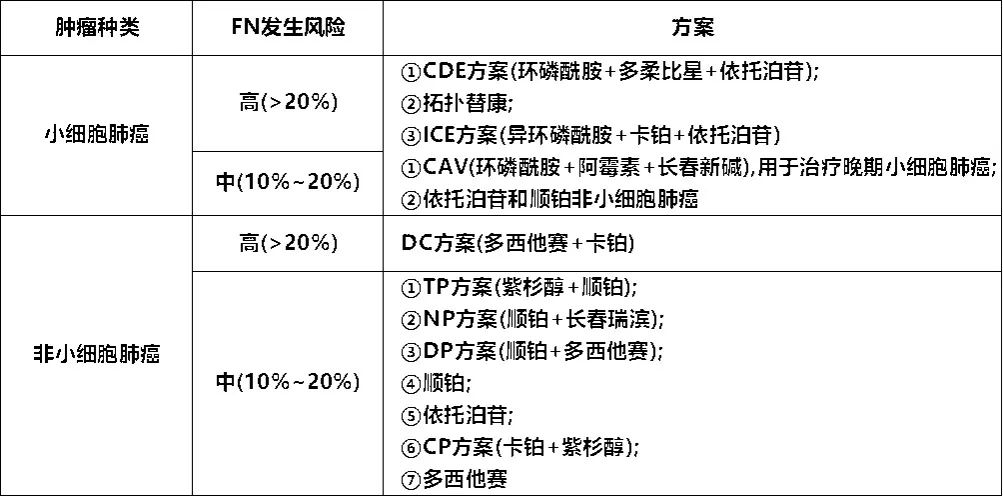
3. Digestive tract tumor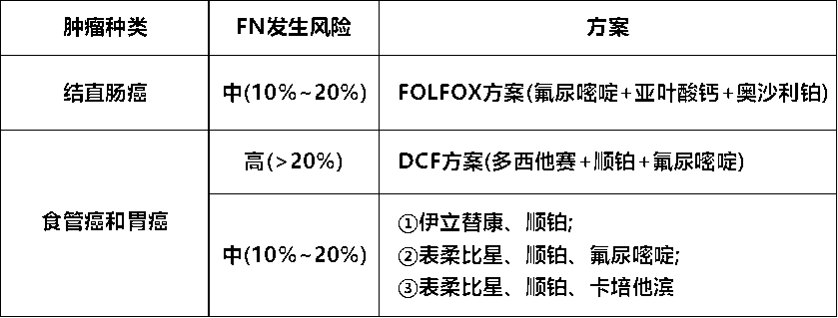
4. Tumor of female reproductive system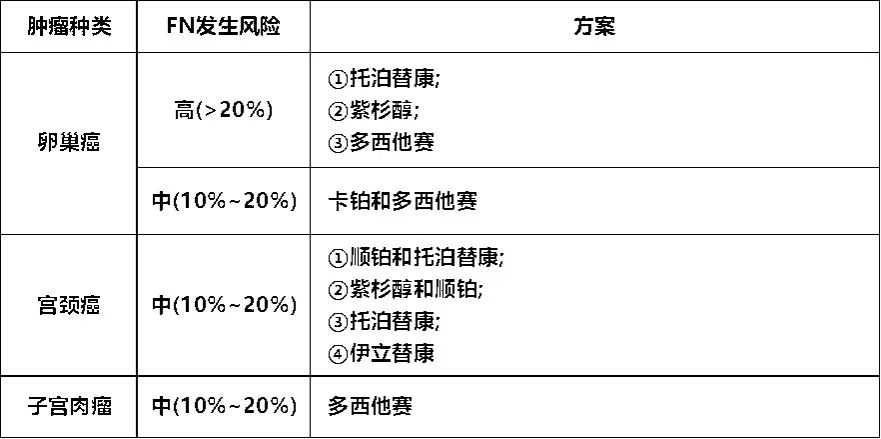
5. Urogenital system tumor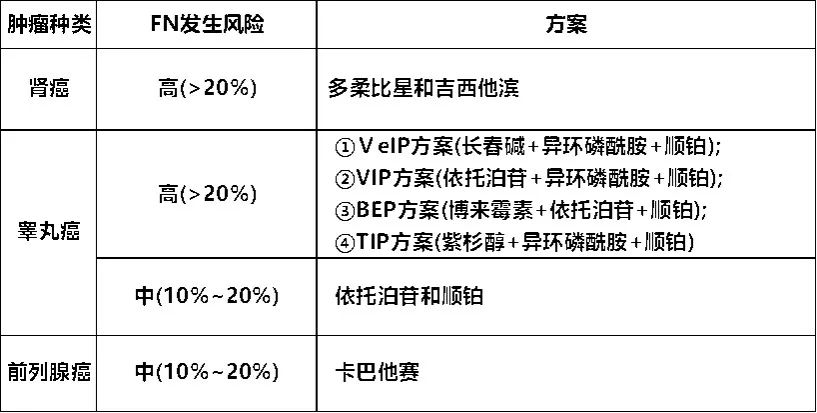
6. Hematological tumor
7. Osteosarcoma and soft tissue sarcoma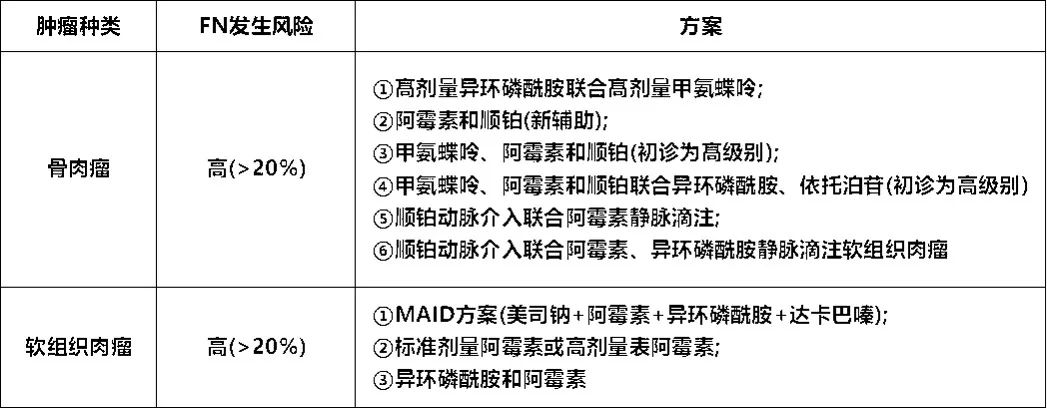
8. Melanoma
Reference:
Guidelines Working Committee of Chinese society of clinical oncology Chinese society of Clinical Oncology (CSCO) guidelines for the standardized management of neutropenia associated with radiotherapy and chemotherapy (2021) Journal of Clinical Oncology, 2021, 26 (7): 638-648
Original link:
https://www.medsci.cn/article/show_article.do?id=9199e31570b1

How to prevent the use of white needles? These high-risk chemotherapy regimens are particularly important!
Abstract:Oneofthemostcommonsideeffectsoftumorchemotherapyisbonemarrowsuppression,andpatientsmayhaveadeclineinleukocytes,platelets,andredbloodcells.Amongthem,leucopeniaisthemostcommon.Dealingwithleucopeniaisaco
1、All the information in this website is available on the Internet, and all of them contain the original text or the source of quotation. You can check the original text;
2、The information on this website is only for learning and popular science, not for any other purpose. Please read it rationally;
3、If the information contained in this website violates your rights, please contact us, we will delete it at the first time, and thank you for your prompt;;
Course of literature review methods:
1、Open the information of the website, where there is the reference source of the information, and click open;
2、Read or download the literature online, most of which are charged. Please download according to your needs and abilities;
3、Baidu search sci-hub, then you can get unexpected download method;
4、Literature Translation: you can easily read the literature by using the "Zhiyun" literature tool;
5、Online English Literature: you can use Baidu translation and other translation tools, or use "copytranslator" to read online more conveniently;
Famous medical literature databases at home and abroad:
Open The Tool
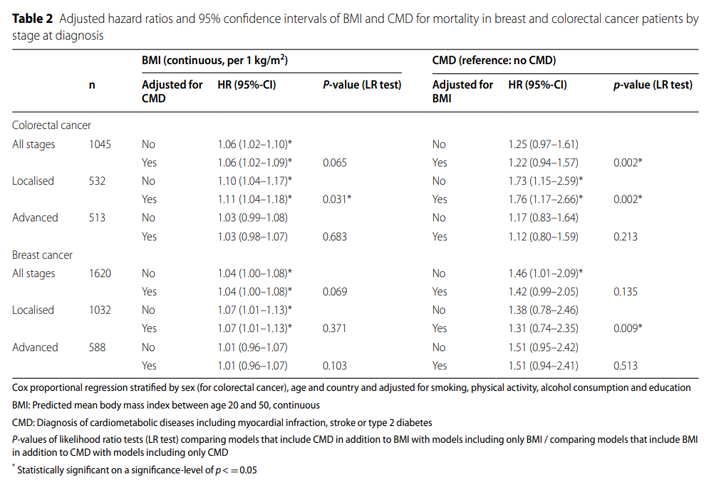
-
For every 1 increase in BMI, the risk of death from colon cancer and breast cancer increases by 6% a
Highbodymassindex(BMI)indicatesoverweightorobesity,whichisoneofthefivemajorriskfactorsintheglobaldiseaseburdenstudyin201
iHealth2022-06-23

-
The first China (Qingyuan) Maitake festival signed a sales order for 1,700 tons of Maitake
OnApril30,thesigningceremonyofthefirstChina(Qingyuan)Maitakefestivalin2020wassignedforsalesordersandcloudplatformcoopera
CloseTo2021-01-05
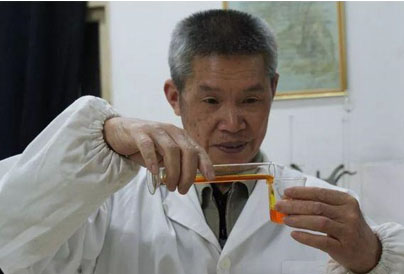
-
Wu Kedian, the modern Wu Sangong: dealing with mushrooms all his life, making the small mushroom umb
InlateSeptember2019,theoutstandingfiguresoftheLishuioftheSecondWorldLishuiPeoplesConferencein2019wereofficiallyreleased.
CloseTo2021-01-04
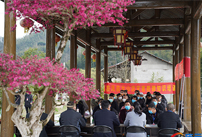
-
Fully guarantee the epidemic prevention and production of Maitake industry! Huangtian Town launches
HuangtianTownistheHometownofMaitakeinChina.Here,theoutputvalueoftheMaitakeindustryexceeds100millionyuanandisanimportants
CloseTo2020-12-25
Research / D-Fraction / Experts
- A review of pharmacological studies on active polysaccharides from Maitake
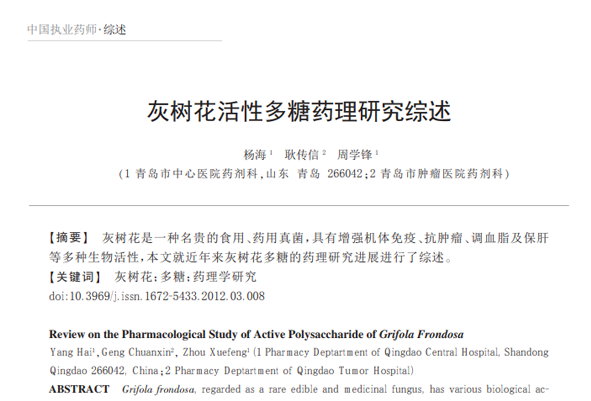
-
Title:灰树花活性多糖药理研究综述Author:杨海,耿传信
Research2022-06-11
- Antitumor activity and immune function of Maitake polysaccharide
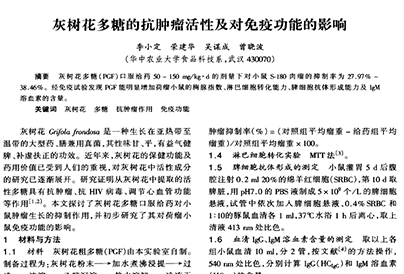
-
AntitumoractivityandimmunefunctionofMaitakepolysac
Research2021-01-05
- Maitake polysaccharide and its anticancer effect
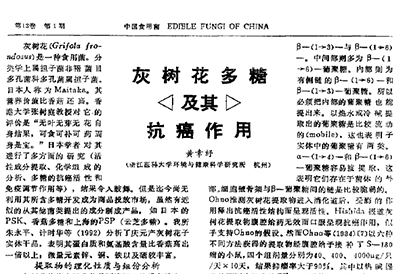
-
Maitakepolysaccharideanditsanticancereffect
Research2021-01-04
Maitake News
- The caspases-dependent apoptosis of hepatoma cells induced by an acid-soluble polysaccharide from Grifola frondosa
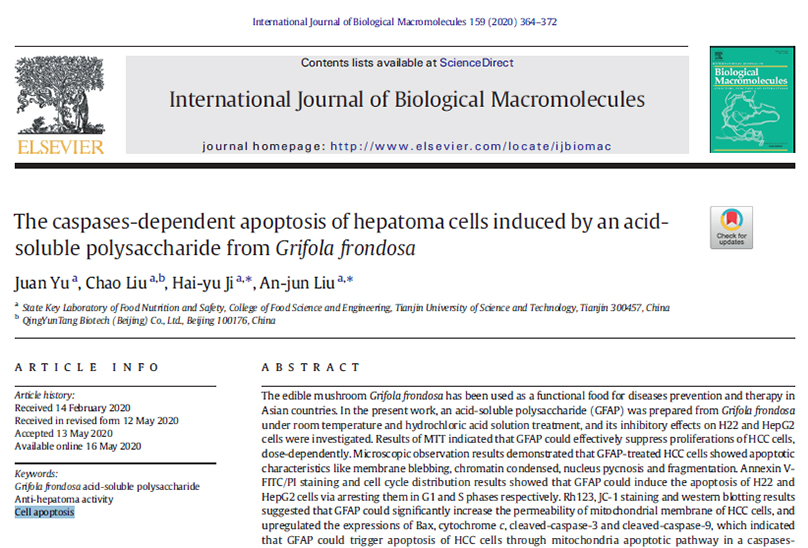
-
Thecaspases-dependentapoptosisofhepatomacellsinduc
Reports2021-08-25
- Maitake of Zhejiang Fangge Pharmaceutical Co., Ltd. won the green organic certification of us and EU

-
Fanggepharmaceuticalhasestablishedacontrollablesta
Reports2021-07-20
- The preparation method of Maitake polysaccharide F2 and its hypoglycemic function won the national patent

-
TheinventiondisclosesaMaitakepolysaccharideF2withh
Reports2021-06-29
Appliance
Maitake Culture
- The first China (Qingyuan) Maitake festival signed a sales order for 1,700 tons of Maitake

-
OnApril30,thesigningceremonyofthefirstChina(Qingyu
CloseTo2021-01-05
- Wu Kedian, the modern Wu Sangong: dealing with mushrooms all his life, making the small mushroom umbrella of mountain city a big industry

-
InlateSeptember2019,theoutstandingfiguresoftheLish
CloseTo2021-01-04
- Fully guarantee the epidemic prevention and production of Maitake industry! Huangtian Town launches

-
HuangtianTownistheHometownofMaitakeinChina.Here,th
CloseTo2020-12-25

